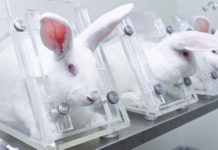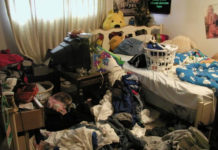When a girl gets her first period the initial months are always filled with confusion and discomfort. She gets used to sanitary pads, which were initially the only type of menstrual protection available. But now, there is a wide range of sanitary products available aimed for comfort, health and the busy lifestyle that people live.
There are basically two types of period protections: external protection and internal protection.
External protection includes pads and panty liners which are pasted to the crotch of your panties to absorb your menstrual flow after it leaves your body.
Internal protection includes products such as tampons, menstrual cups and are inserted into the vagina to catch or absorb your menstrual flow before it leaves your body. People prefer internal protection because you don’t feel a thing and you can play sports, swim and take part in other outdoor activities without the tension of staining.
Using a tampon or other form of internal protection is scary for the first time- the thought of having “something” inside your vagina can be scary for anyone initially- BUT it gets much easier!
Both internal and external forms of protection are safe. But do read the manufacturer’s directions while using the protection and maintain HYGIENE! This part cannot be stressed.
Types of Sanitary Products:
Pads
Pads are the most common type of period protection used. These pads are super, slender, can be used overnight, with or without wings, deodorant, unscented, ultra, maxi, mini, day use, over-night use, etc., These things about pads may seem a bit confusing at first because there are so many different kinds. But after the initial few months, you will get to know which type of pad works for you and the one that you are comfortable in!

The Pads come in several different thicknesses and absorbencies for heavier or lighter menstrual periods or for day or nighttime use. Hence the girls with lighter periods can use the one with lighter thickness and they can use the thickness they need and not be uncomfortable wearing the pad of higher thickness and girls with a heavy flow don’t need to worry that they’ll leak through their pad.
Non-chlorine bleached all-cotton pads are available and are a bit more expensive than regular pads and are disposable but they’re not made using chemicals.

Markets are flooded with Reusable, washable, cloth pads and they work just like regular disposable pads, but instead of throwing them away after use, you wash them, and re-use them again. Reusable pads usually come in two parts: a liner and a liner holder. They come in different sizes and absorbencies and are usually less irritating because they are made of organic cotton and not plastic. Cloth pads are more expensive than disposables, but they last for years and hence that’s a safe where you don’t have to keep buying pads/tampons every few months. Girls with sensitive skin or those prone to allergies prefer cloth pads made with organic cotton.

Tampons are the most common and preferred type of internal protection and are also one of the most preferred type of sanitary product these days opted by women who lead a very active and busy lifestyle. These are inserted inside the vagina and they absorb the blood before they leave the body. That way you don’t have rashes or the stains that are quite common with pads. Tampons have to be changed every 4-8 hours depending on the flow and the absorbency of the tampon. They come in 2 absorbencies- Normal absorbency and higher absorbency. Tampons are of two types- With applicator and without an applicator. You need to insert the tampon with your fingers while using tampons without applicator- hence you should maintain utmost hygiene while inserting it- wash your hands before and after insertion with antiseptic liquids; but while inserting tampons with applicator- although you need to maintain hygiene- but you don’t need to insert it manually by touching it with hands.

Toxic Shock Syndrome (TSS) is one of the most common infection associated with the use of tampons- but the occurrence is low and you wouldn’t be affected by TSS IF you properly follow the instructions and maintain hygiene.
Tampons have a string attached to one end that stays outside the body and is used to remove the tampon at any time. Occasionally, if you forget to remove a tampon it is still there- but if left in too long, it although, won’t get lost but you may get a odor, and develop an infection. That’s why it’s important to change tampons often.

If it’s time to change your tampon and you can’t find the string you’ll need to reach in with your fingers to find the string. It may take a minute to do because the string might be a bit hard to grab but you need not worry. Even if you cannot find it, or the string gets accidentally torn, just go to a gync., and she will remove. But you need not worry about tampons- once you get used to them, you will never go back to pads! BUT it is always good to alternate tampons and pads. NEVER use a tampon over-night, instead use a pad. This will also decrease the risk of TSS.
Sea sponge tampons are a natural alternative to synthetic tampons that come in different sizes to absorb varying amounts of menstrual flow. They are quite expensive when compared to synthetic tampons and on average they cost between $12-20 dollars (for a package of 2). These are harvested from the ocean floor and contain no synthetic materials, they are then naturally bleached with hydrogen peroxide and one sea sponge will last about 6 months, but some may not last as long. A menstrual sea sponge should be thrown away and replaced if you notice that it rips apart while you’re inserting or removing it from your vagina. You should follow the instructions that come with the product. Before using a sea sponge tampon, you’ll have to dampen it, squeeze it tightly in your hand, and then gently insert it into your vagina. When the sponge is dry, it’s surprisingly hard, but once dampened it softens up immediately. Once in place, it works like a tampon to absorb menstrual flow.

A sea sponge needs to be rinsed out about every 3 hours and thoroughly cleaned, dried, and properly stored at the end of each menstrual cycle. Care must be taken to remove the sea sponge to avoid tearing it.
Reusable Menstrual Cups: Menstrual cups are yet another alternative to tampons and are made of rubber or medical grade silicone. It is basically a cup that is easy to fold so that it can be inserted into the vagina to collect menstrual blood rather than absorb it.. A menstrual cup is placed inside the vagina a few inches below the cervix. When it is time to empty the cup, simply remove and empty the cup into the sink, or toilet then rinse with clean water then reinsert.

Menstrual cups are not linked to TSS (Toxic Shock Syndrome) because they simply collect the blood rather than absorb it. They can be worn about 6-12 hours and come in 2 sizes- The bigger cup is recommended for women over 30 who have delivered a baby vaginally and the smallest cup to be used if you are not sexually active
Period Panties are the latest craze where you can pads/tampons/menstrual cups free and rely only on your panties to absorb. These panties come in 4 different absorbencies which you can wear depending on your flow. Although these are very expensive and not yet available in India- but it’s only a matter of time before they are available online in India.

By: Archa Dave




























